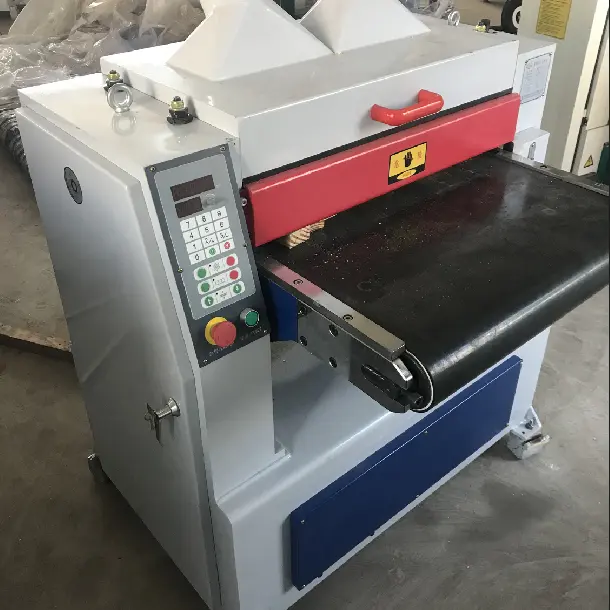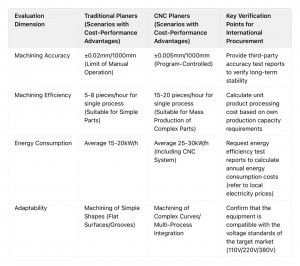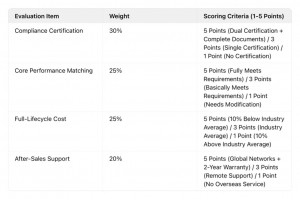Methods for Evaluating the Cost-Effectiveness of Industrial Planers
I. Compliance Certification: The “Basic Threshold” for Entering the Target Market
The primary risk in international procurement is compliance failure. Non-compliant products may face customs clearance obstacles, fines, or even sales bans. This is a prerequisite for cost-effectiveness.
Regional Mandatory Certification Priority
* EU Market: Must pass EN12417 certification (core standard of the Machinery CE Directive), focusing on safety protection devices (adjustable guards, emergency stop devices), electrical systems (compliant with EN 60204-1), and noise limits.
* North American Market: CSA certification is core, requiring compliance with electrical safety (insulation resistance ≥1MΩ, grounding resistance <0.1Ω), mechanical strength testing, and electromagnetic compatibility (EMC) requirements.
* Other Regions: Prioritize suppliers with multi-country certifications (e.g., CE+CSA dual certification) to reduce multi-market deployment costs.
Certification Document Completeness Verification
* Require suppliers to provide complete technical documentation: risk assessment report, type test report, declaration of conformity (DoC), and multilingual operation manual (at least English/…) (French) Avoid customs clearance delays due to missing documents.
II. Performance Quantification: “Core Indicators” Matching Production Needs
Performance parameters divorced from actual application scenarios are meaningless; they must be specifically evaluated in conjunction with the buyer’s processing requirements.
Practical Suggestion: Request suppliers to provide “trial processing tests”—send typical workpiece samples to verify the equipment’s performance in processing actual materials (such as stainless steel and aluminum alloys), avoiding inflated parameter specifications.
III. Cost Breakdown: “Hidden Expenses” Throughout the Lifecycle
The total landed cost of international procurement is far more than the equipment quote; a complete cost chain must be calculated.
Explicit Cost Composition (Latest Data in 2025)
Equipment Purchase Price (60%): Compare FOB quotes from more than 3 suppliers; be wary of products priced 30% below the industry average (potentially indicating material shoddy workmanship).
Cross-border Logistics Costs (20%): Ocean freight costs from Asia to North America have decreased by 12% year-on-year; consider LCL (Less than Container Load) to reduce costs for small-batch procurement.
Customs Duties and Taxes (Percentage) 12%): The weighted average tariff on industrial equipment from the US to China is 19.3%, and the EU tariff is approximately 6.5%. The destination tariff rate needs to be calculated in advance.
Insurance + Local Costs (8%): Purchase all-risk insurance at 0.3%-0.5% of the goods value, and reserve funds for port warehousing and last-mile delivery costs.
Hidden Cost Control
Maintenance Costs: For CNC planers, reserve funds for programming training (approximately 3% of the total equipment price) and spare parts reserves (2%-5% annually); for traditional planers, focus on the global supply capacity of vulnerable parts (instruments, drive belts).
Downtime Losses: Prioritize brands with a warranty of ≥2 years for core components (spindle, motor), and require information on global repair network distribution (e.g., local repair response time in Europe/North America ≤72 hours).
IV. After-Sales Guarantee: Cross-border procurement… “Risk Mitigation”
The after-sales response capability of international procurement directly impacts equipment availability and is a crucial supplement to cost-effectiveness:
Global Service Network Verification: Confirm the supplier’s service coverage in the target market: Does it have authorized repair centers and bonded warehouses for spare parts (shortening spare parts delivery time)?
Technical Support: Does it provide 24-hour multilingual remote diagnostics and on-site service pricing (avoiding hidden service fees)?
Key Contract Terms: Clearly define the warranty scope: Does it include labor, spare parts, and logistics costs (a common point of contention in cross-border repairs)?
Liability for Breach of Contract: Agree on the return and exchange process for non-conforming equipment, who bears the customs clearance costs, and the standard for compensation for delays?
Supplier Qualification Verification: Prioritize manufacturers that have passed ISO 9001 quality management system certification and have more than 10 years of export experience. Request case studies of buyers in the same region (e.g., proof of cooperation with an EU automotive parts company).
Practical Tools for Evaluating Cost-Effectiveness of International Procurement:
Total Cost Calculation Formula: Total Life Cycle Cost (LCC) = Equipment Purchase Price × (1 + Tariff Rate) + Logistics Insurance + 5 Years of Maintenance Fees + Energy Costs – Equipment Residual Value
Performance Ratio Rating Matrix (Example)
Post time: Nov-17-2025



